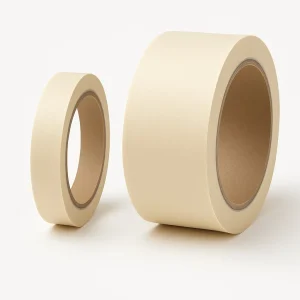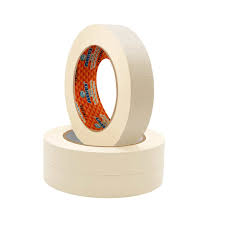
WORLDWIDE SHIPPING via DHL | Free Shipping above 200aed in UAE | Free Samples | Exceptional offerings since 2010 PROJECTS CERTIFICATE & ACHIVEMENTS IMPORT & EXPORT
WORLDWIDE SHIPPING via DHL | Free Shipping above 200aed in UAE | Free Samples | Exceptional offerings since 2010 PROJECTS CERTIFICATE & ACHIVEMENTS IMPORT & EXPORT
Explore the benefits of 1 inch and 2 inch masking tapes crisp paint edges, easy removal, strong yet gentle adhesion for every DIY or pro project.

Masking tape has long been the unsung hero behind crisp paint lines, tidy craft work, and scuff‑free repairs. This guide breaks down the most popular widths 1‑inch and 2‑inch so you can pick the perfect roll every time.
A pressure‑sensitive crepe‑paper tape coated with a low‑to‑medium tack adhesive, masking tape sticks firmly yet peels away cleanly from most surfaces. Its balance of adhesion and removability makes it indispensable across painting, automotive, crafting, and light‑industrial tasks.
| Width | Best For | Typical Roll Length | Common Colors |
|---|---|---|---|
| 1 inch (25 mm) | Precision edging, tight curves, small touch‑ups | 20–50 m | Beige, blue |
| 2 inch (50 mm) | Broad protection, masking baseboards, bundling cables | 20–50 m | Beige, blue |
The narrow profile hugs curves and detailed trim, preventing paint bleed and keeping lines razor‑sharp.
Smaller jobs use less tape, saving material while reducing environmental impact.
Ideal for stenciling, labeling, scrapbooking, and any project where fine detail counts.

Double the width halves the time—perfect when you need to mask baseboards, door frames, or automotive panels fast.
A broader adhesive footprint grips dust sheets, plastic sheeting, or cable bundles more securely.
Fewer overlaps mean fewer gaps for paint seepage, ensuring a consistent finish.

Project Scale:
Use 1 inch for window muntins, artwork borders, and curved lines.
Opt for 2 inch on long, straight runs like skirting boards or car hoods.
Surface Texture:
Rougher textures (stucco, brick) benefit from 2‑inch to improve adhesion area.
Smooth interiors often need only 1‑inch.
Paint Type & Dry Time:
For quick‑drying sprays, wide tape minimizes overspray.
Water‑based wall paints pair well with narrow tape on fine trim.
Clean & Dry: Dust‑free surfaces ensure full adhesive contact.
Press Firmly: Run a plastic squeegee or credit card along the edge.
Mind the Angle: Remove tape at a 45‑degree angle while paint is still slightly tacky.
Temperature Matters: Apply between 10 °C and 38 °C (50–100 °F) for optimal stick‑and‑peel performance.
Q1: How long can masking tape stay on without residue?
Most painter’s tapes remain residue‑free for up to 14 days indoors; UV‑resistant varieties last 7 days outdoors.
Q2: Can I reuse masking tape?
Reapplication weakens adhesion and precision—use a fresh strip for best edges.
Q3: What’s the difference between beige and blue masking tape?
Blue (or green) tapes often feature higher UV resistance and gentler adhesives, suited to delicate surfaces and outdoor work.
Your email address will not be published. Required fields are marked *